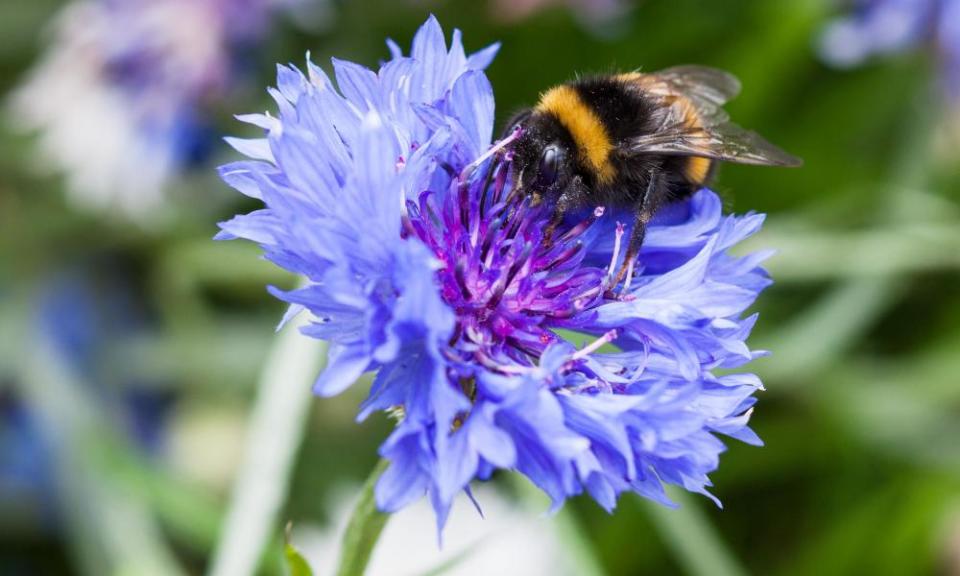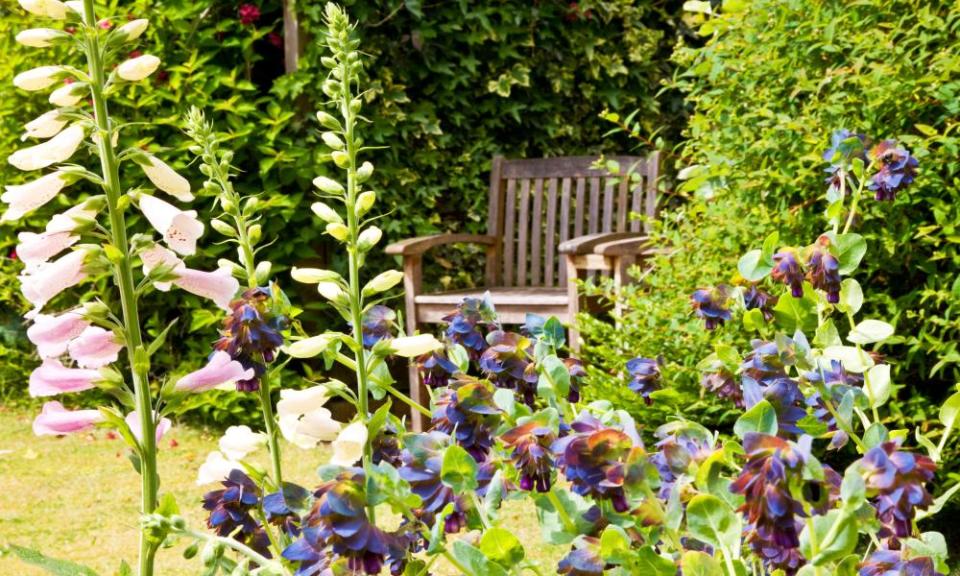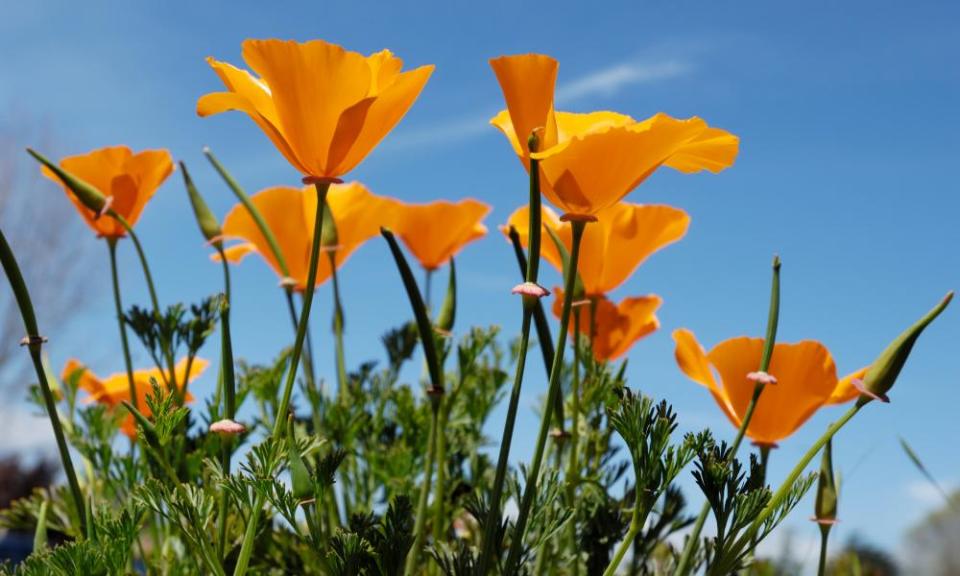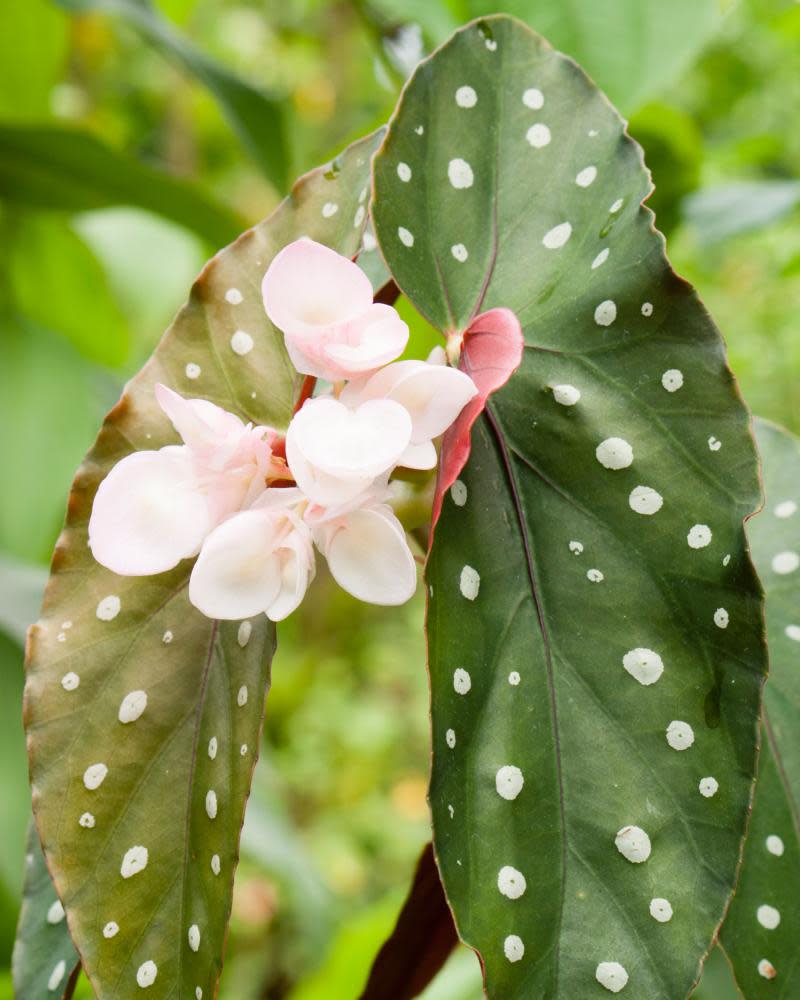Spring gardening: savvy tips to save you time and money

Gardening is always a process of experimentation: you will kill some plants along the way while others thrive in a way you may never have expected. But by doing some research before you head online or to the garden centre, you can save yourself wasting lots of time and money on projects that will only disappoint. The key to being a savvy gardener is weighing up your time, budget, expertise level and the nature of your space to work out what you can grow and how.
Here’s an example: it may seem cheaper to grow tomatoes from seed, given a packet sets you back about £2, but do you have space to nurture dozens of small plants? You will need to find a warm, light spot for your seedlings to grow indoors in the period before they can safely live outside 24/7 (mid to late May in the UK). Then consider how many of the plants you have room for outside, and how many tomatoes your family eats. Rather than starting from scratch, you may conclude it is wiser to wait a few weeks and buy the exact number of young plants you need that can go straight outside. Starting this way also means you could grow a few different varieties, one plant of each. Three large plug plants will set you back about £5-£10 via mail order when they go on sale soon. Suttons offers three tomato plug plants of different varieties for £9.99, while the Organic Gardening Catalogue has a Tutti Frutti collection of three different small tomatoes for £4.99.

You can buy plug plants of pretty much any vegetable you can think of these days but if you have lots of time but not much money, it is cheaper to buy seed packets of vegetables that can be sown directly outside, such as lettuce, carrots, beetroots and radishes. Most of these commonly grown veg are all “one-hit wonders” of the plant world. They are defined as annuals, which grow and are harvested within a single year, as opposed to perennials, which will keep growing year on year.
Related: Buying plants by mail order: what are your tips?
There aren’t so many well-known perennial vegetables, aside from rhubarb, asparagus and globe artichokes, but if you dig a little deeper, you can find perennial substitutes for our better-known annual veg. These take a lot of the work and expense out of growing veg, as you need to sow or buy in plants once, then they will keep cropping year after year: although the initial outlay may be slightly higher, this is outweighed by the years of harvest you’ll enjoy. Welsh onion (Allium fistulosum) can be used in place of spring onions and bulb onions, while perennial kales such as Daubenton and Taunton Deane are just as tasty but will grow for several seasons, as will nine star perennial broccoli (Brassica oleracea botrytis asparagoides).
There are perennial substitutes for spinach, too, including sea beet (Beta vulgaris subsp maritima) and good king henry (Chenopodium bonus-henricus) – the latter’s leaves need soaking in a bowl of heavily salted water for an hour or two before rinsing and cooking but are delicious and nutritious. For salads, try buckler-leaved sorrel (Rumex scutatus), perennial wall rocket (Diplotaxis tenuifolium), buckshorn plantain (Plantago coronopus) and salad burnet (Sanguisorba minor). The website incrediblevegetables.co.uk sells a good range of perennial vegetables if you want to explore this option.
When it comes to ornamentals, it is always cheaper to buy younger, less established plants
When it comes to ornamentals, it is always cheaper to buy younger, less established plants but you will have to be patient as you wait for it to mature and fill the space: this is true for everything from shrubs to herbs. Smaller plants may be more susceptible to attacks from slugs and other pests; on the plus side, they may find it easier to adapt to your conditions than a mature plant that has had a long life being cosseted in a plant nursery. If you can bear to wait, November to March is the season for planting bare-root trees, perennials and shrubs such as roses, and these tend to be cheaper than container-grown specimens. For instance, a bare-root Gertrude Jekyll shrub rose from David Austin costs £19.50 whereas the potted one is £27.
A warning about summer bedding plants. These are usually tender annuals that provide colour in patio pots, hanging baskets and flowerbeds for a few months each year: petunias, begonias, fuchsias and similar. Garden centres are packed with young plug plants now but, just like tomatoes, these tender types cannot be planted out safely until the risk of frosts is over, usually sometime in mid to late May. So, unless you have somewhere warm and light to store them, hold off buying anything yet or you could be wasting your money.
Or consider sowing hardy annual flowers: these also only last one year but they will self-seed around the garden and make a welcome return in the form of new seedlings every spring. They are beloved of bees and make good cut flowers, too. My favourites are cerinthe (Cerinthe purpurascens), nigella (Nigella damascena), cornflower (Centaurea cyanus), California poppy (Eschscholzia californica) and flowering flax (Linum grandiflorum): these should set you back between £1.95 and £2.05 from the Higgledy Garden shop. These should bring years of pleasure if sown in a sunny spot, and if nothing comes up, it’s heartening to know you have only wasted a pound or two on a packet of seeds.

Another alternative to buying summer bedding plug plants is investing in young plants of herbs such as sage, lavender, chives, parsley, tarragon, thyme and anise hyssop, which should set you back about £2-£3 for a 10cm pot. These plants will look good in containers, you can use them in the kitchen and many are perennial, so will provide years of growth. The mail order firm Norfolk Herbs has a great selection, and grows using peat-free compost.
Beyond the garden, houseplant prices have been increasing since they rose in popularity last year
Beyond the garden, houseplant prices have been increasing since they rose in popularity last year but there are ways of building your collection without spending a fortune. Caladiums are all the rage in indoor growing circles: you can buy a full-grown plant for about £30, whereas a bulb will only set you back about £4-£5. Provided you have the expertise to get it to sprout (this tropical needs plenty of warmth to get growing), there are great savings to be made. Likewise, a polka dot Begonia (Begonia maculata) costs £4.10 as a plug plant from the mail order supplier Dibleys but costs £15 or more to buy as a full-size plant.

Look out for local plant swaps and sales, in person and online – often if people have grown tomatoes from seeds they have an excess of small plants they are keen to pass on to other gardeners. Neighbourhood social media groups are a good place to pick up other people’s spares or to trade any you have for something else you want for your veg patch. Don’t be afraid to ask questions at the garden centre: a good one should have knowledgable staff on hand to help you make the right choices for your situation.
Gardening on the cheap
Adopt a “make do and mend” attitude, and gardening doesn’t have to cost you a fortune. It may require slightly more effort, whether that’s browsing junk shops and finding bargains online or zhooshing up things you find for free, but the result will save your bank balance, as well as giving you a big tick on the sustainability front.
There’s plenty of inspiration to be had at your local allotment. Plot holders have long been the experts at being thrifty: every site is dotted with large blue food grade barrels repurposed as water butts, raised beds made from old wooden scaffold boards and floorboards, crops protected by debris netting (used by builders and scaffolders) and compost bins made from wooden pallets.
When it comes to larger garden items, sites such as Facebook marketplace, Freegle and Freecycle are a boon. Greenhouse and shed sales have soared since the coronavirus pandemic but they are still fairly easy to pick up cheaply or even for free, provided you are prepared to dismantle and transport them. Look out for secondhand garden furniture, too: some people will give away or sell solid wood furniture cheaply rather than repaint or revarnish it. The same goes for tools such as spades, forks and rakes.
If you can pick up a dryer or washer drum – the metal cylinder inside the machine that is removed when it is scrapped – you can turn it into a fire pit or allotment incinerator. Mine is painted black with stove paint and used as a coffee table on my patio. Sometimes you will see these for sale at your local tip (or ask nicely and they may well give you one for free). While you are there, look out for bicycle wheels and mattress springs, which can be used for quirky supports for climbers such as beans or sweet peas.
Plastic kitchen bins, builders’ buckets and catering-size food cans can be pressed into service as containers for plants, provided you add drainage holes in the base. If you are sowing seeds, clear plastic food containers from meat or vegetable packaging make excellent mini seed trays, and a lidded one can create a mini propagator.
If you are looking for new containers for houseplants, browse charity shops for secondhand pottery containers for plants, saucers you can employ as drip trays, and wicker baskets, or even waste bins, you can repurpose to hide a plastic nursery pot (line them with a hole-free plastic bag to stop water leaks).
Raid your kitchen for other container options: old casserole dishes, slow cooker crocks and plastic bowls can hold plants. Metal colanders convert to hanging baskets by adding string or chain to the handles: if you have moth-eaten wool jumpers or blankets, cut these up to use as a basket liner. Forget fancy watering cans for your houseplants: I use a glass milk bottle, and for seedlings I add a bottle top waterer to a regular plastic bottle.
For the garden, cheap plastic watering cans tend to crumple after a season or two, so look out for good quality galvanised or plastic ones in junk shops and on local giveaway groups. Raid the recycling bin for bits of useful plastic, too: cut a large plastic milk jug in half and the handle end makes a great compost scoop, while plastic cutlery makes effective plant labels (or stick into bare soil to protect against local cats using the area as a toilet).
Not only is this thrifty approach satisfying and fun, it also frees up more money to be spent on the most important part of gardening – the plants.

 Yahoo Movies
Yahoo Movies 